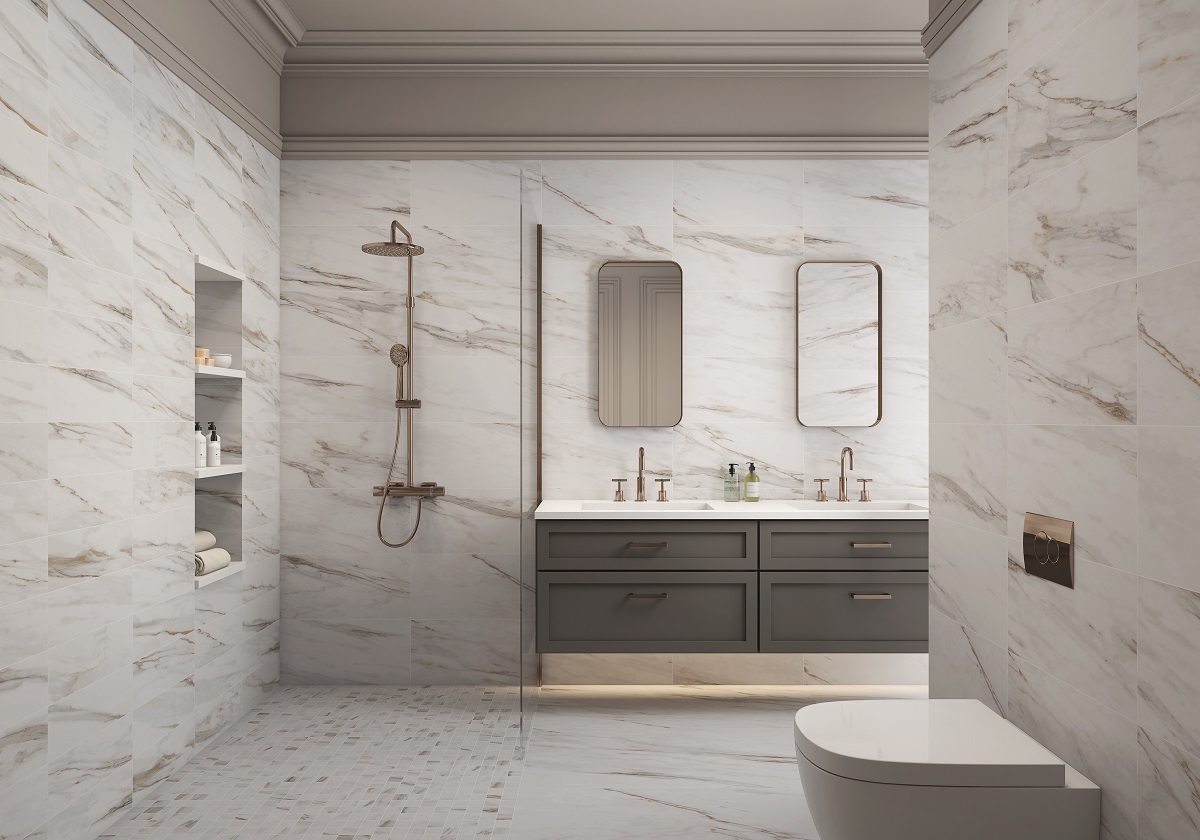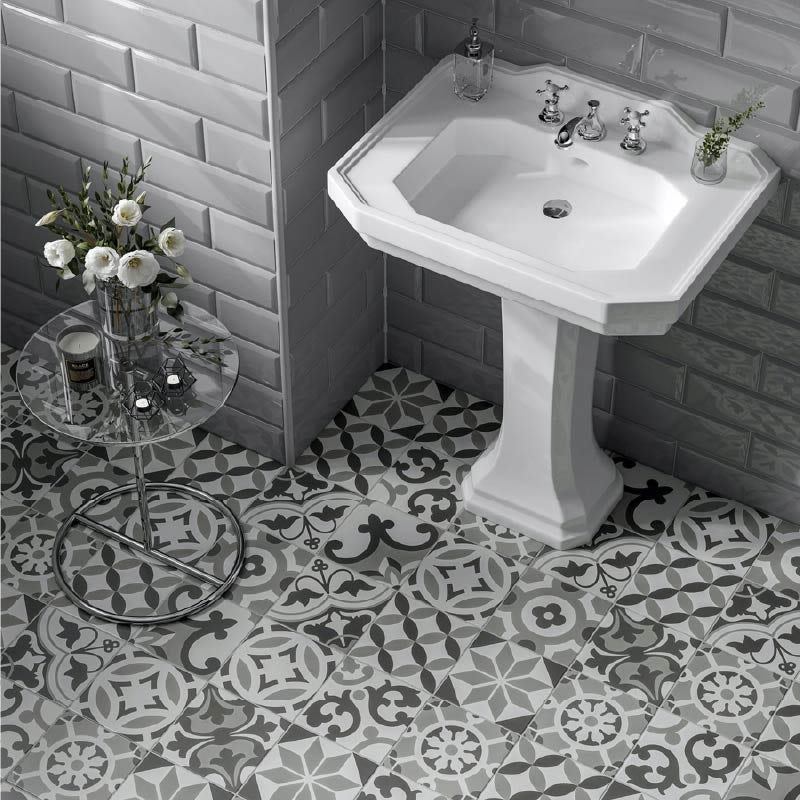Floor tile should go under wall tile to ensure a seamless appearance and effective moisture barrier. It aids in the prevention of water infiltration behind the wall tile.
When renovating or constructing a bathroom, the order in which tiles are installed can significantly impact both the room’s appearance and functionality. Placing floor tile under wall tile creates a cleaner look and helps to protect the structure from water damage.
This method is crucial, especially in areas prone to moisture, like showers and bathrooms. It is also an industry standard, as it provides a more polished finish and can prevent various tiling problems down the line. Ensuring that the floor tile extends underneath wall tile, contractors and DIY enthusiasts alike can lay a solid foundation for a well-tiled space that is both durable and visually appealing.

Introduction To Tile Installation
Tile installation is a key step in building a lasting and visually appealing surface. Whether for floors or walls, understanding how tiles work is crucial. Tiles have their own size, texture, and durability.
It’s important to note that floor tiles are generally thicker and harder to withstand foot traffic. Wall tiles might be thinner and lighter for ease of installation on vertical surfaces. Knowing this helps in making informed decisions on which tiles to use where.
| Tile Type | Thickness | Best Used For |
|---|---|---|
| Floor Tiles | Thicker | Floors |
| Wall Tiles | Thinner | Walls |
Many DIY enthusiasts ask, “Should floor tiles go under wall tiles?” The sequence of laying tiles affects the outcome. Often, laying floor tiles first creates a seamless look with the wall tiles overlapping the edges. This method also prevents moisture from seeping behind the wall tiles.
Arguments For Installing Floor Tile First
Achieving a flawless finish often starts with tile installation order. Professional tilers generally agree that placing floor tile before wall tile ensures a cohesive look. This method allows the wall tiles to neatly overlap the floor, providing clean lines and hidden edges.
Drawing from construction experience, installing floor tile first can lead to greater efficiency. Workers avoid the risk of damaging wall tiles while laying floor ones. This approach also facilitates easier measurements and cuts during installation.
Cost savings is another consideration. Reduced tile wastage results from the precise fit floor-first installation offers. Tile trimmings from floors can be repurposed for walls, minimizing excess.
Looking at examples, professionals demonstrate this best practice in their workflows. The resulting work showcases the practical and aesthetic advantages of this methodology.
Counterarguments: Placing Wall Tile Before Floor Tile
Specific layout choices can benefit from placing wall tile before floor tile. For example, small bathrooms might appear more seamless. This approach can lead to easier transitions between different flooring materials.
Structural considerations may dictate the sequence of tiling. Installers often prioritize wall stability and waterproofing concerns. Mounting wall tile first acts as a safeguard against water damage over time.
Maintenance and repair can be less of a hassle. Replacing damaged floor tiles becomes simpler when they lie atop the wall tile edge. This prevents the need to disturb the wall tile during floor repair.
Diverse practice testimonials reveal split opinions. Some experienced tilers insist that underlying wall tile makes future updates and fixes easier. Others argue that installing floor tile first ensures a professional finish.
Best Practices And Considerations
Deciding if floor tile should go under wall tile is crucial. Evaluate the space and design before starting. Measure the area carefully. Check wall structures to ensure a solid foundation.
Waterproofing is essential in wet areas like bathrooms. Use a reliable membrane to prevent moisture damage. Insulation enhances both warmth and soundproofing. Always select quality materials for these layers.
DIYers should follow step-by-step guidelines. Safety is key, so wear protective gear. Preparation is important; don’t rush into tiling without planning.
| Tip | Reason |
|---|---|
| Start with floor tile | Creates a level base |
| Keep wall tile above | Prevents moisture seepage |
| Use spacers | Ensures even gaps |
Seasoned tilers suggest working in small sections. Confirm tiles are aligned. Allow adhesive to set before grouting. Mind the expansion gap near walls. Keep surfaces clean and level.
Conclusion: Making An Informed Decision
Deciding whether floor tile should go under wall tile involves several factors. Durability and design play crucial roles in this process. A well-laid floor tile provides a solid foundation for wall tiles, enhancing longevity and aesthetics.
- Floor tiles should support wall tiles for structural integrity.
- Professional tilers often recommend laying floor first.
- Doing so ensures a seamless look and easier maintenance.
Your choice affects the outcome of your tiling project. Seek expert advice for best results. Research thoroughly and choose quality materials. For more help, tap into online forums, DIY videos, and manufacturer’s guides. These resources will guide your tiling project toward success.


Conclusion
Deciding on floor and wall tile placement is key for a lasting finish. It’s clear that installing floor tile before wall tile ensures a cohesive look and structural integrity. Tackling your tiling project with this strategy not only aids in a smoother installation but also elevates the end result.
Remember, precise planning and execution are paramount for that flawless finish. Keep these tips in mind to enhance your space’s beauty and functionality.




